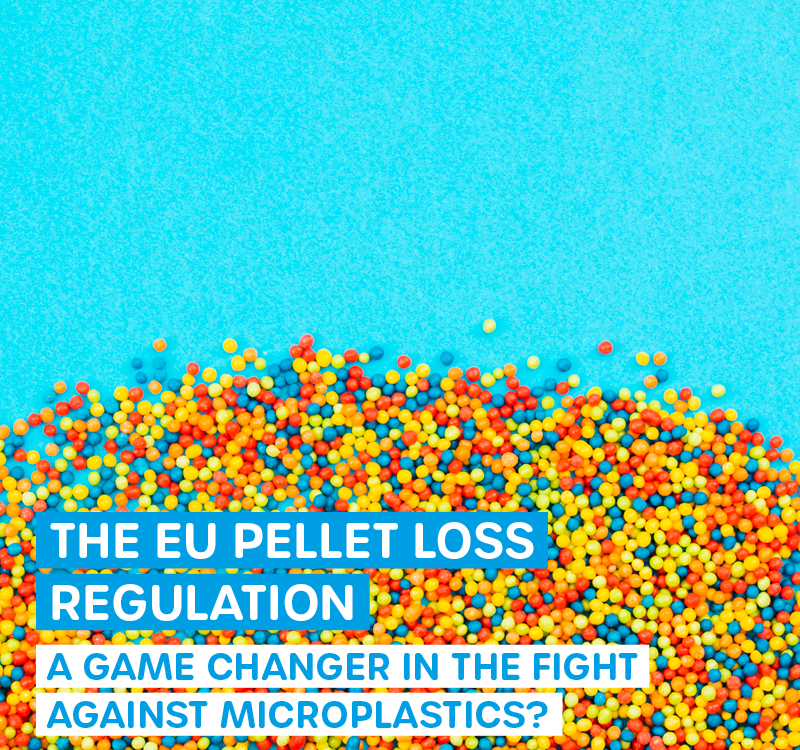
Microplastics and Citizen Science
28. July 2025
Microplastic mapping at the Ocean Race Europe
1. August 2025When Microplastics Analytics Fails: Scientific Reality Check of Nile Red and IR Spectroscopy
Microplastics have become one of the most pressing environmental problems of our time. However, while public attention to the issue is growing, much of the available research data is based on an analytical method that exhibits fundamental scientific weaknesses: Nile Red. What is promoted as a cost-effective and simple solution turns out, upon closer examination, to be a scientific dead end with far-reaching consequences. And even with spectroscopic methods, dangers lurk.
The documented weaknesses of Nile Red include:
1. The Chitin Problem: When Natural Polymers Become Microplastics
One of the most serious weaknesses of Nile Red lies in its lack of specificity. The study by Süssmann et al. (2024) in the renowned journal Analytical and Bioanalytical Chemistry documents an alarming phenomenon: 1% of chitin particles are incorrectly classified as microplastics.
This seemingly low error rate becomes dramatic when considering that chitin, as the second most abundant biopolymer on Earth, is omnipresent in aquatic systems. Already Maes et al. (2017) warned of this problem in Scientific Reports: Analysis of fluorescent particles from control sediments using Raman microscopy revealed them to be mineralized chitin fragments.
The quantitative dimension becomes clear through fluorescence intensities: Wood and chitin fluoresce after Nile Red staining between 1.40-12 and 32-74 arbitrary units, respectively. Stanton et al. (2019) documented in Environmental Science & Technology Letters a maximum 100% overestimation of microplastic particles when using Nile Red alone.
2. Polymer-Specific Blindness: When Important Plastics Become Invisible
The efficiency of Nile Red varies dramatically between different polymer types. Nel et al. (2020) showed in Chemosphere critical detection gaps:
- Low-density polymers (PS, PE, PP) fluoresce strongly
- High-density polymers (PET, PVC) fluoresce weakly or not at all
- 45% beta errors occur in PE detection with standard protocols
This selective blindness is particularly problematic since PET belongs to the most common microplastic polymers in environmental samples. Beverage bottles, textiles, and packaging - all major sources of microplastics - are systematically underestimated.
3. Solvent-Induced Artifacts: When Analysis Falsifies Results
The Süssmann study documents an alarming phenomenon: Polystyrene shows extreme sensitivity to the solvents used in Nile Red protocols. Image analysis revealed:
- 55% loss of particles under 50 micrometers
- 140% increase in larger particles through "fusion" of smaller particles
- Distortion of particle size distribution through partial dissolution
These artifacts make quantitative statements impossible and lead to systematic errors in size distribution.
4. Extreme Contamination Rates: The Underestimated Problem
The Süssmann study reveals extreme contamination rates:
- 26-832 MP-like particles per sample in the BAM-MP series
- 912-1627 particles per sample in the MP mixture series
- Up to 124 micrograms of contamination per sample
These contamination rates often exceed the actual microplastic concentrations in environmental samples.
The Cost Trap of Spectroscopic Methods
While µFT-IR (Micro-Fourier Transform Infrared Spectroscopy) is often praised as the "gold standard" due to its high specificity, the cost structure makes this method unusable for most practical applications:
Time Requirements and Throughput:
- Up to 15 hours analysis duration depending on resolution and device type
- Single particle measurements require 2-5 minutes per particle
- Current maximum sample throughput: 2-3 samples per day with experienced operators
- Manual particle sorting before analysis required, foreign contamination cannot be excluded
Cost Structure:
- Equipment costs: €150,000-400,000 for high-resolution systems
- Personnel costs: €500-800 per sample with qualified operators
- Maintenance costs: €15,000-25,000 annually
- Consumables: €50-100 per sample
Practical Limitations for Process Monitoring
Time-Critical Problems:
- Results available after 24-48 hours at earliest
- No real-time monitoring possible
Operational Requirements:
- Highly qualified specialists required for equipment operation
- Controlled laboratory conditions necessary
- Maintenance-intensive optics susceptible to contamination
The Reality of µFT-IR Application
A practical example illustrates the problem: For daily monitoring of a municipal wastewater treatment plant with 100,000 population equivalents using µFT-IR:
- Annual costs of €365,000 for analytics alone
- Two full-time specialists for equipment operation
- Results with 24–48-hour delay
- No possibility for process interventions during peak loads
This cost gap makes µFT-IR practically unusable for routine monitoring and process control.
Process Monitoring Has Different Requirements – Practicality is Needed
Industrial Process Monitoring:
- Immediate alerts for limit value exceedances required
- Automated process interventions within minutes necessary
- Continuous monitoring without personnel effort
Municipal Wastewater Treatment:
- Early warning systems for peak loads
- Real-time optimization of treatment performance
- Compliance verification with high measurement frequency
Water Body Monitoring:
- Hotspot identification during pollution events
- Trend analyses with statistically relevant datasets
- Cost-effective long-term monitoring over years
The Measurement Frequency Problem
While µFT-IR allows at best weekly measurements at enormous costs, continuous environmental monitoring and process control require:
- Hourly to daily measurements for process optimization
- Several hundred measurements per year for statistical validation
- Immediate availability of results for interventions
The Innovation: Wasser 3.0 detect MP-1 as Cost-Effective Alternative – Revolutionary Speed Meets Moderate Costs
Analysis Duration:
- Under 15 minutes per sample including evaluation
- Automated sample preparation in under 5 minutes
- Immediate result transmission via digital interfaces
Throughput and Scalability:
- Over 20 samples per hour with full automation
- 24/7 operation possible without personnel effort
- Parallel measurement stations for high-throughput applications
Universal Polymer Specificity: Solutions for Well-Known Problems
Unlike Nile Red, Wasser 3.0 detect MP-1 shows universal affinity to all relevant plastic types:
- Uniform detection of PE, PP, PS, PET, PVC, and PA
- No selective blindness to high-density polymers
This universality eliminates the 45% beta errors in PE detection and enables reliable statements about total microplastic contamination for the first time. Thus, Wasser 3.0 detect MP-1 ensures the elimination of Nile Red problems and provides real solutions for the microplastics analytics world.
Problem 1: False-Positive Results
- Solution: Highly specific binding exclusively synthetic polymers
- Low cross-reactivity with chitin, lignin, or other biopolymers
Problem 2: Polymer-Specific Blindness
- Solution: Universal polymer affinity
- Equal detection efficiency for all plastic types
Problem 3: Solvent-Induced Artifacts
- Solution: Gentle, aqueous processing
- Preservation of original particle integrity
- Direct staining in water possible
Problem 4: Process-Related Contamination
- Solution: Minimal sample handling
- Closed analysis systems
Why Wasser 3.0 detect MP-1 is Indispensable for Process Monitoring
The practical superiority of Wasser 3.0 detect MP-1 is impressively demonstrated in three different application areas. We have evaluated three potential practical examples for this purpose.
Practical Example: Wastewater Treatment Plant
In a municipal wastewater treatment plant with 100,000 population equivalents, daily measurements were conducted over 18 months, documenting 95% microplastic retention with recognizable seasonal fluctuations. This resulted in annual costs of only €127,750 compared to €292,000 for µFT-IR analytics, representing cost savings of €164,250.
Practical Example: Industry
A textile company demonstrates the advantages of fast response time through hourly monitoring of its production wastewater with automated alerting for limit value exceedances, achieving a 90% reduction in microplastic emissions.
While Wasser 3.0 detect MP-1 enables process interventions after just 15 minutes, µFT-IR requires 24-48 hours until results are available, illustrating the difference between damage prevention and retrospective documentation.
Practical Example: Water Body Monitoring
Long-term monitoring of a river system at 50 measurement points over two years with monthly measurements and targeted removal measures documents an average contamination reduction of 35% at total costs of €420,000 for Wasser 3.0 detect MP-1 versus €600,000 for µFT-IR, with an additional 15-fold higher measurement frequency possible.
The practical applications clearly demonstrate that Wasser 3.0 detect MP-1 is irreplaceable for effective process monitoring. With justy 15 minutes until process intervention, it enables real damage prevention, while µFT-IR with 24-48 hours waiting time only offers retrospective documentation.
Water body monitoring at 50 measurement points over two years finally proves that only the 15-fold higher measurement frequency of Wasser 3.0 detect MP-1 at simultaneously lower costs enables statistical significance and reliable trend analyses.
Without Wasser 3.0 detect MP-1, neither preventive process control nor cost-effective long-term monitoring would be realizable in the required quality and frequency.
Scientific Validation Confirms Superiority of Wasser 3.0 detect MP-1
With over 1,000 successful analyses in real applications, Wasser 3.0 detect MP-1 proves its practical superiority. For process monitoring, the use of Wasser 3.0 detect MP-1 is indispensable – no other method offers the required combination of speed, cost-efficiency, and reliability.
The analytical performance data show with a repeatability precision of RSD < 3% and a reproducibility precision of RSD < 5% the exceptional reproducibility of the method, while the accuracy of 95-105% recovery and a selectivity of over 99.9% for synthetic polymers underpin the methodical reliability. These precision values significantly exceed the requirements of established analytical standards and create the foundation for reliable process monitoring.
The direct method comparison between Nile Red and Wasser 3.0 detect MP-1 once again reveals the dramatic weaknesses of alternatives and confirms the necessity of a paradigm shift.
While Nile Red delivers unusable results with 45% beta errors and 100% overestimation, µFT-IR achieves 95% specificity but remains unsuitable for process monitoring with a maximum of 2-3 samples per day.
Wasser 3.0 detect MP-1, on the other hand, combines 99.9% specificity with a throughput of over 20 samples per hour, thus ensuring both scientific excellence and practical applicability for the first time.
The regulatory compliance also emphasizes the future security of the method, as the requirements of upcoming regulations are already met today. The ISO-compliant validation in preparation, compliance with EPA guidelines for microplastic analytics, and EU Drinking Water Directive compliance prove that Wasser 3.0 detect MP-1 is not only scientifically superior but also regulatorily future-proof.
This combination of analytical precision, practical efficiency, and regulatory compliance makes Wasser 3.0 detect MP-1 the only reliable solution for modern microplastic monitoring.
The future of microplastic analytics requires a change: away from expensive, slow laboratory methods or unreliable rapid tests toward scientifically sound, economically viable process monitoring solutions. Only in this way can we not only understand the microplastic problem but actively and cost-effectively combat it.






